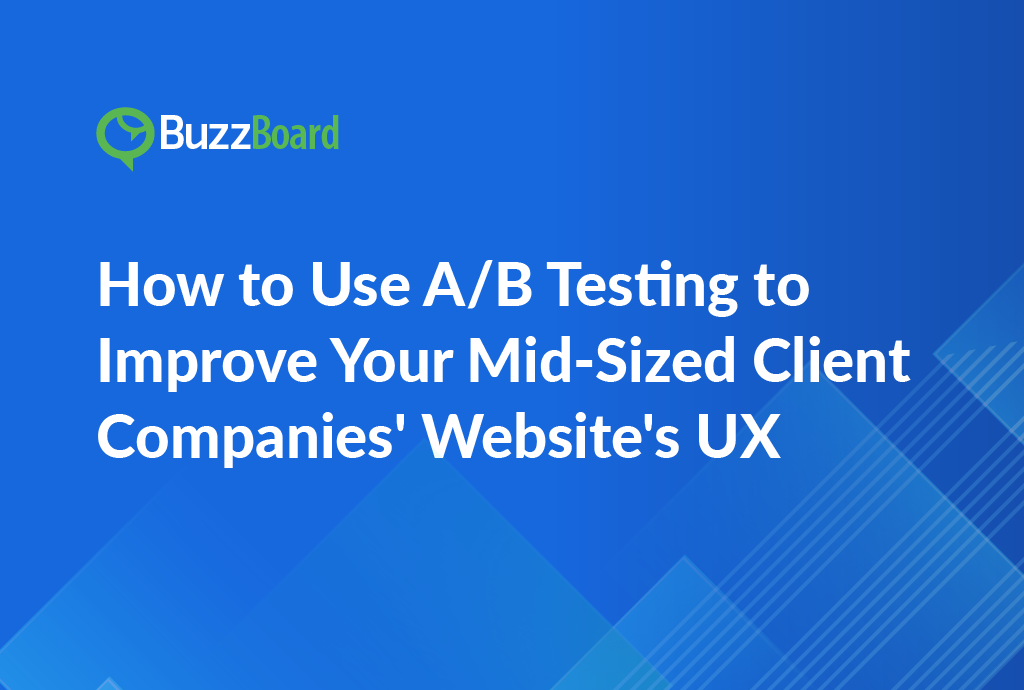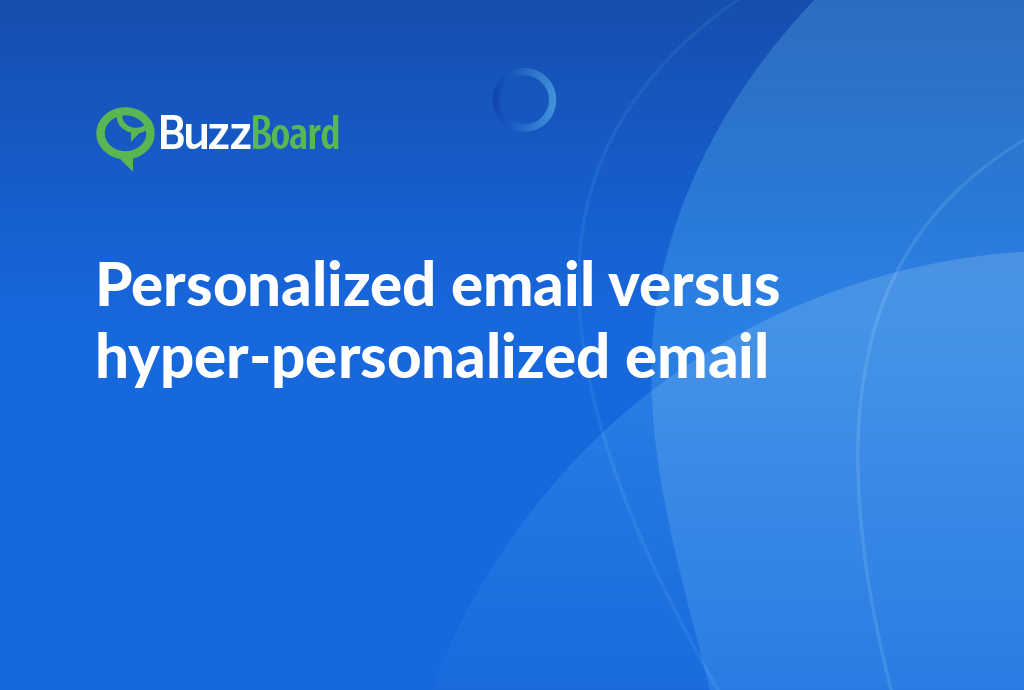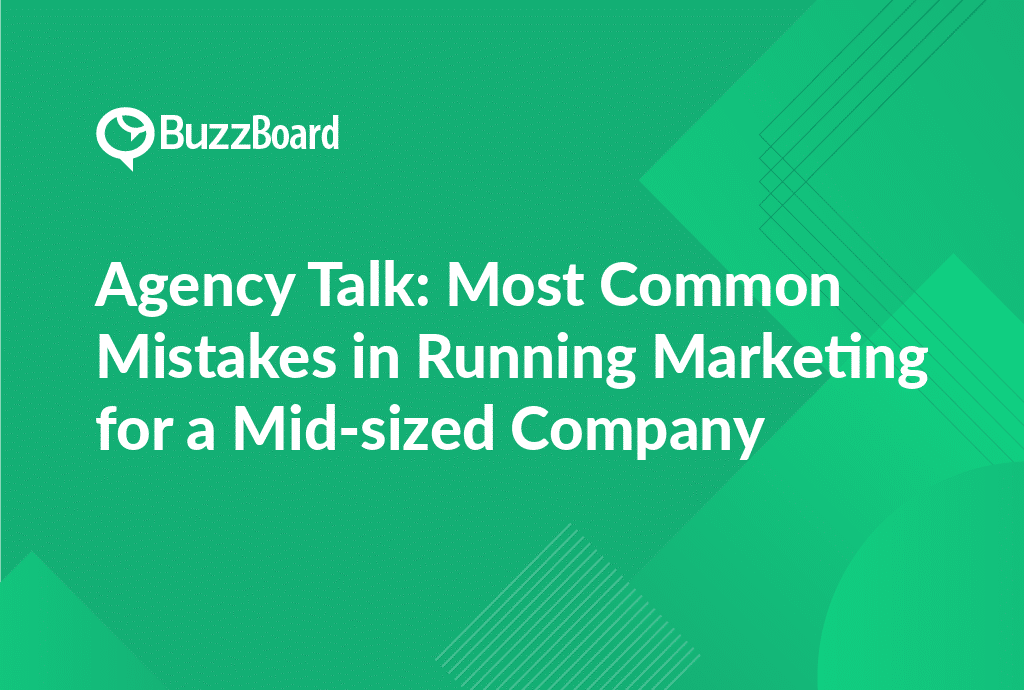How to Improve Your Mid-Sized Client Company’s Website UX with A/B Testing: A step-by-step guide to identifying and optimizing website elements that drive conversions, boost engagement, and enhance user experience. Learn how to create and execute effective A/B tests, analyze results, and make data-driven decisions to elevate your website’s performance and stay ahead of the competition.
Understanding the Basics of A/B Testing and Its Significance
In the competitive digital arena, mid-sized companies continuously vie for user attention. Ensuring an optimal user experience becomes an increasingly essential task. One of the most effective ways to enhance a user’s digital journey on your client’s website is through the implementation of A/B testing.
A/B testing, also known as ‘bucket testing,’ plays a pivotal role in decision-making for website designs, especially for mid-sized companies. A/B testing compares two versions of a webpage (version A and version B) to determine which one performs better. This method involves the collection and analysis of empirical data to strategically change the website’s design, layout, and content.
There’s a common misconception that A/B testing is only beneficial for large corporations with millions of users. The truth is that A/B testing also significantly benefits mid-sized companies by removing the ‘guesswork’ from website design, offering clear insights into what works best for the specific audience.
While big brands have a higher margin for error, every user counts for mid-sized companies. A/B testing enables these companies to make informed decisions that cater to their user base, ensuring they maximize their digital potential and enhance the user experience.
Implementing A/B testing on mid-sized companies’ website designs enhances the user experience by crafting a more efficient, user-friendly, and intuitive journey. An improved user experience means higher user engagement, increased customer retention, and ultimately, a better bottom line.
If you’re a digital marketing agency striving to deliver value to your mid-sized business clients, don’t underestimate the power of A/B testing. Enhance your clients’ user experience today by integrating A/B testing into your digital strategies.
The more you know, the more you can grow. Let’s assist mid-sized businesses in experiencing the benefits of successful digital marketing. Happy selling!
Steps to Effectively Apply A/B Testing
The competition to attract and retain online customers has reached an all-time high. For mid-sized companies, having a well-designed website is no longer a luxury, but a necessity. A website that is visually appealing, user-friendly, and optimized for conversions can be the difference between success and failure. However, not all website designs are created equal, and it’s not uncommon for companies to struggle to achieve their online goals.
This is where A/B testing, also known as split testing, comes into play. A/B testing is a user experience research methodology that involves creating two versions of a website element, such as a headline, color scheme, call-to-action, or layout, and testing them against each other to determine which one performs better. By using A/B testing, website designers can make data-driven decisions that improve web interactions and ultimately boost sales.
To apply A/B testing to your mid-sized company’s website design, start by identifying a specific element that you want to test. This could be anything from a headline, color scheme, call-to-action, or even the layout. Create two versions of this element, with one being the control (A) and the other being the variation (B). Then, present these designs to an equal number of visitors and use an A/B testing software tool to track and compare the performance of each design.
The key to successful A/B testing is to examine the results and look for statistical significance in the count of users achieving the desired result on each page. By comparing these results, you can gain valuable insights into which design resonates more effectively with your users, potentially enhancing conversion rates and overall website performance.
The benefits of A/B testing are numerous. For one, it provides actual evidence of what works and what doesn’t on your website design, allowing you to make informed decisions about how to improve your site. Additionally, A/B testing can help you identify areas of your website that are causing friction and confusion for your users, and make changes to improve their overall experience.
Improving user experience is crucial for businesses of all sizes, as it can have a significant impact on search engine rankings, customer retention, and attracting new customers. By using A/B testing to optimize your website design, you can improve the user experience, increase conversions, and ultimately drive more revenue for your business.
Some of the key benefits of A/B testing include:
- Improved conversion rates: By testing different design elements, you can identify which ones are most effective at driving conversions and make changes to optimize your website for maximum results.
- Increased user engagement: A/B testing can help you identify areas of your website that are causing friction and confusion for your users, and make changes to improve their overall experience.
- Better search engine rankings: A well-designed website that is optimized for user experience can improve your search engine rankings, making it easier for potential customers to find you.
- Increased customer retention: By providing a better user experience, you can increase customer satisfaction and loyalty, leading to increased retention rates and repeat business.
- Improved brand reputation: A well-designed website that is optimized for user experience can improve your brand reputation and establish your business as a leader in your industry.
A/B testing is a powerful tool that can help mid-sized companies improve their website design and drive more revenue. By using A/B testing to optimize your website design, you can improve the user experience, increase conversions, and ultimately drive more revenue for your business.
Analyzing the Impact and Results of A/B Testing
The data-driven digital age has given rise to a new era of savvy digital marketing agencies that leverage the power of A/B testing to refine their mid-sized clients’ website designs. By harnessing the power of experimentation, these agencies can enhance the user experience, drive conversions, and inform data-driven decision-making.
A case study from Optimizely, a leading provider of experimentation and personalization solutions, underscores the merits of deploying A/B testing approaches for mid-sized companies. The study highlights the success of a middle-tier online retailer that aimed to enhance its site’s conversion rate. The marketing team was torn between two design options for the website’s shopping cart placement – on the right or left side. To resolve this debate, the team decided to execute an A/B test.
The test design featured two variations: Design A, which placed the shopping cart on the top right corner, and Design B, which placed it on the top left corner. The results were nothing short of impressive. Design B outperformed Design A by a significant margin, with a 10% surge in conversions. This simple act of shifting the shopping cart to the left led to a meaningful revenue augmentation, demonstrating the potential impact of A/B testing on mid-sized companies.
This case study presents a compelling portrayal of A/B testing’s effectiveness in optimizing a mid-sized company’s website design for enhanced user experience and conversion rates. The results are a testament to the power of experimentation in driving business outcomes. By using A/B testing, the online retailer was able to identify the optimal design for its website, leading to increased conversions and revenue.
Despite the potential benefits of A/B testing, many mid-sized companies may be hesitant to invest in such tests, fearing their possible inefficacy or associated expenses. However, outcomes like the one mentioned above illuminate the potential Return on Investment (ROI) of A/B testing. By using data-oriented strategies like A/B testing, digital marketing agencies can help mid-sized businesses refine their website designs, improve user experience, and boost sales conversion rates.
High-yield agencies recognize the significance of using data-oriented strategies like A/B testing to refine website designs. They understand that A/B testing is not a one-time event, but rather an ongoing process that requires continuous experimentation and iteration. By embracing A/B testing, these agencies can help their mid-sized clients stay ahead of the competition, drive business growth, and achieve their goals.
In summary, A/B testing is a powerful tool that can help mid-sized companies optimize their website designs, improve user experience, and drive conversions. By leveraging the power of experimentation, digital marketing agencies can help their clients achieve meaningful business outcomes and stay competitive in the digital landscape. As the data-driven digital age continues to evolve, the importance of A/B testing will only continue to grow, making it an essential component of any digital marketing strategy.
Top Tools and Resources for Executing A/B Testing
As digital marketing agencies aim to construct optimal strategies for mid-sized companies, numerous tools adept at performing A/B testing on website design have gained prominence. A/B testing is crucial to enhancing the user experience, enabling agencies to experiment with varying elements of a website’s design to gauge what resonates most with users.
Although a multitude of tools exist, there are a few that distinguish themselves in the space of testing website designs for mid-sized companies. These tools offer not only A/B testing features but a bevy of other advantageous functionalities.
The choice of an A/B testing tool largely depends on the specific website’s needs and the overarching business objectives. The right tool can streamline the testing process, elevate conversion rates, and ultimately enhance the user experience.
Predicting the Future Advancements of A/B Testing
In the rapidly evolving landscape of digital marketing, staying ahead of the curve is essential for digital marketing agencies seeking to offer their services to mid-sized businesses. One potent and effective tool that can help agencies achieve this goal is predictive modeling of future developments in A/B testing. The primary objective is to consistently enhance user experience, a critical factor in selling any digital marketing service.
A/B testing is not a new concept in digital marketing, but its potential for future growth and development sets it apart in this fast-paced field. A/B testing enables marketing agencies to make data-driven decisions on mid-size company website design modifications, with user experience at its core. By leveraging A/B testing, agencies can create two versions of a webpage (Version A and Version B) and evaluate performance based on user interaction. This data informs the team on what’s effective and what requires further enhancement, facilitating the creation of optimized and engaging user experiences.
Creating an engaging user experience is crucial in mid-sized business website design. It establishes a direct and intuitive path for customers, thereby augmenting the conversion likelihood. This priceless tool not only hinges on its flexibility but also on the data it compiles, capable of providing insights into consumer behaviors and inclinations. By understanding user preferences, digital marketing agencies can tailor their strategies and engage their audience effectively. This not only enables mid-sized businesses to sustain reviews and feedback but also builds trust in potential clients.
The predictive aspect of A/B testing allows digital marketing teams to anticipate enhancements and updates, enabling them to stay ahead of the competition. By utilizing A/B testing, agencies can identify areas of improvement and make data-driven decisions to optimize website design, content, and user experience. This proactive approach helps mid-sized businesses benefit from an improved user experience in real-time, setting them apart from their competitors.
Familiarity with future A/B testing enhancements allows digital marketing agencies to expediently modify website designs, assisting mid-sized businesses in benefiting from an improved user experience in real-time. The secret to success lies in consistency, maintaining a regular and thorough A/B testing schedule can be crucial for achieving optimal results. By regularly testing and refining website design, agencies can ensure that their clients’ websites remain engaging, user-friendly, and optimized for conversions.
In addition to its predictive capabilities, A/B testing also provides valuable insights into consumer behaviors and inclinations. By analyzing user interaction data, agencies can identify patterns and trends, enabling them to make informed decisions about website design, content, and user experience. This data-driven approach helps agencies create targeted marketing campaigns that resonate with their audience, increasing the likelihood of conversions and driving business growth.
To maximize the benefits of A/B testing, digital marketing agencies should prioritize the following strategies:
- Regularly test and refine website design to ensure optimal user experience.
- Utilize predictive modeling to anticipate future developments and stay ahead of the competition.
- Analyze user interaction data to identify patterns and trends, and make informed decisions about website design, content, and user experience.
- Tailor marketing strategies to user preferences and inclinations, increasing the likelihood of conversions and driving business growth.
- Maintain a consistent and thorough A/B testing schedule to ensure optimal results.
By incorporating these strategies into their digital marketing approach, agencies can help mid-sized businesses achieve a competitive edge, drive business growth, and establish a strong online presence.









